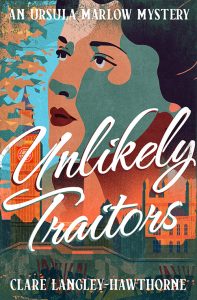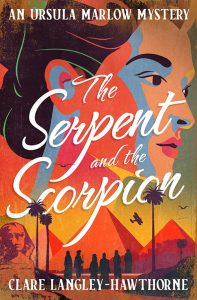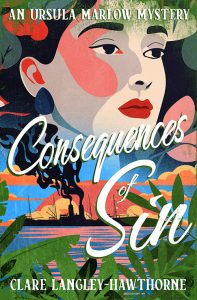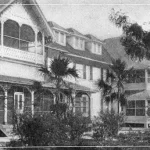 New Inspiration - Moving to Naples, Florida has provided inspiration for a new historical mystery, set during the glamorous 1920s when the rich would come stay at the Old Naples Hotel to whet their appetite for hunting, fishing, and adventure in a pristine paradise far removed from Prohibition Era rules. Read More
New Inspiration - Moving to Naples, Florida has provided inspiration for a new historical mystery, set during the glamorous 1920s when the rich would come stay at the Old Naples Hotel to whet their appetite for hunting, fishing, and adventure in a pristine paradise far removed from Prohibition Era rules. Read More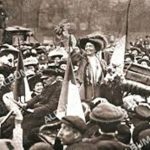 Division within the WSPU - In my second Ursula Marlow book, The Serpent and The Scorpion, I allude to the schism that occurred within the Women's Social and Political Union (WSPU) in 1912 over the issue of militancy. Read More
Division within the WSPU - In my second Ursula Marlow book, The Serpent and The Scorpion, I allude to the schism that occurred within the Women's Social and Political Union (WSPU) in 1912 over the issue of militancy. Read More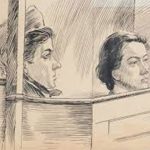 Edwardian Murder - I have just read a fascinating article about a murder case in Edwardian England in which a woman named Kitty Byron stabbed her loved (Alfred Baker) on the steps of their local post office. Read More
Edwardian Murder - I have just read a fascinating article about a murder case in Edwardian England in which a woman named Kitty Byron stabbed her loved (Alfred Baker) on the steps of their local post office. Read More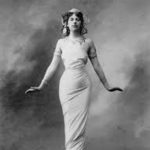 Female Spies - I've been up to my eyeballs in espionage. Starting with Tammy Proctor's terrific "Female Intelligence, Women and Espionage in the First World War" followed by Julie Wheelwright's "The Fatal Lover. Mata Hari and the Myth of Women in Espionage" and ending up with Matthew Seligmann's "Spies in Uniform, British Military & Naval Intelligence on the Eve of the first World War". Read More
Female Spies - I've been up to my eyeballs in espionage. Starting with Tammy Proctor's terrific "Female Intelligence, Women and Espionage in the First World War" followed by Julie Wheelwright's "The Fatal Lover. Mata Hari and the Myth of Women in Espionage" and ending up with Matthew Seligmann's "Spies in Uniform, British Military & Naval Intelligence on the Eve of the first World War". Read More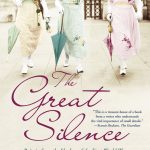 The Aftermath of War - I have amassed quite a collection of books spanning the Edwardian era to the post WW1 years. One of my favorites, The Great Silence by Juliet Nicholson, describes the emotional aftermath of the war, detailing the years 1918 to 1920 and the introduction of the two-minute silence as a way of remembering the war dead. Read More
The Aftermath of War - I have amassed quite a collection of books spanning the Edwardian era to the post WW1 years. One of my favorites, The Great Silence by Juliet Nicholson, describes the emotional aftermath of the war, detailing the years 1918 to 1920 and the introduction of the two-minute silence as a way of remembering the war dead. Read More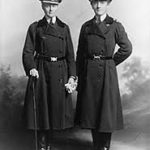 Women Police During WW1 - The First World War heralded the first visible role for women in ‘policing’ work in Britain. Coordinated by two separate organizations – the National Union of Working Women (renamed the National Council of Women in 1919) and the Women's Police Volunteers (renamed the Women’s Police Service in 1915) – these pioneer policewomen were introduced because of safety and morality concerns during wartime. Read More
Women Police During WW1 - The First World War heralded the first visible role for women in ‘policing’ work in Britain. Coordinated by two separate organizations – the National Union of Working Women (renamed the National Council of Women in 1919) and the Women's Police Volunteers (renamed the Women’s Police Service in 1915) – these pioneer policewomen were introduced because of safety and morality concerns during wartime. Read More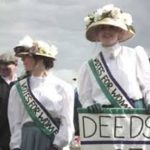 Inspiration for Ursula Marlow – Suffragette, Oxford Graduate, and (Reluctant) Heiress - When people ask me where the inspiration for the character of Ursula Marlow came from, I tell them that she literally strode into my head wearing the purple, white, and green sash of Women’s Social and Political Union. Read More
Inspiration for Ursula Marlow – Suffragette, Oxford Graduate, and (Reluctant) Heiress - When people ask me where the inspiration for the character of Ursula Marlow came from, I tell them that she literally strode into my head wearing the purple, white, and green sash of Women’s Social and Political Union. Read More

